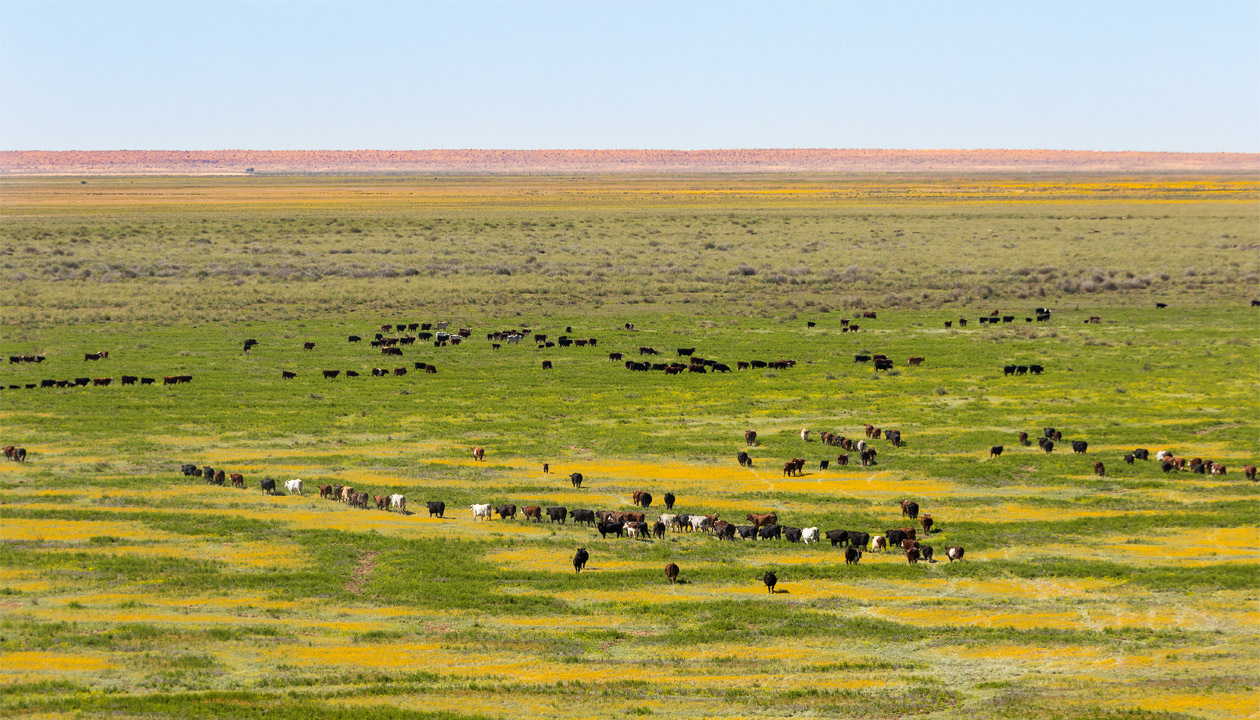Australia’s second-largest pastoral property, Clifton Hills in SA, changed hands last year, just in time for the bounty of a floodwater season.
Story + Photos Georgie Mann
The air is sweet at Clifton Hills station this season. Floodwaters have delivered riches and thousands of hectares of Channel Country floodplains have burst to life. Cattle graze in feed up to their bellies, wildflowers paint the landscape an intoxicating palette of colours and channelled watercourses weave their way through a flourishing tapestry of lush green abundance. Birds sing and the distant whirr of a chopper can be heard as it musters yet another paddock of fattened bullocks to the yards.
“It’s God’s own country up here, aye,” grins station manager Pete Nunn, as he rides back into the stock camp on dusk, and unsaddles his horse. “A season like this is the stuff Channel Country dreams are made of.”
It was just last November that Clifton Hills station, Australia’s second-largest pastoral grazing property, located 200km south of Birdsville in the north-east corner of South Australia, changed hands for the first time in nearly 50 years. Tightly held by a South Australian family consortium since 1968, it was bought on a walk-in, walk-out basis by renowned Central Australian cattlemen Viv Oldfield and Donny Costello under their expanding Crown Point Pastoral Co partnership.
Championed and sold as the “Jewel of the Channel Country”, less than six months into the new tenure Clifton Hills received its largest flood since 1974. It was a bittersweet gift from northern Queensland’s devastating floods, injecting new life into a desperately dry landscape and delivering an extraordinary maiden season for the station’s new owners.
Clifton Hills stretches over a whopping 16,510sq km and covers a large portion of the fabled Channel Country. Three of the main Channel rivers – the Diamantina, Georgina and Cooper – flow through the station. Floodwaters sprawl over the iconic Goyder Lagoon, a 2500sq km gem, right at its heart. The lagoon, a heady expanse of endless green, has become a luscious food bowl, where ‘Diamantina Lucerne’ grows waist high.
But then it stops. The floodwater line carves a stark contrast between feast and famine. Beyond the line, the dust blows.
This story excerpt is from Issue #128
Outback Magazine: Dec/Jan 2020









